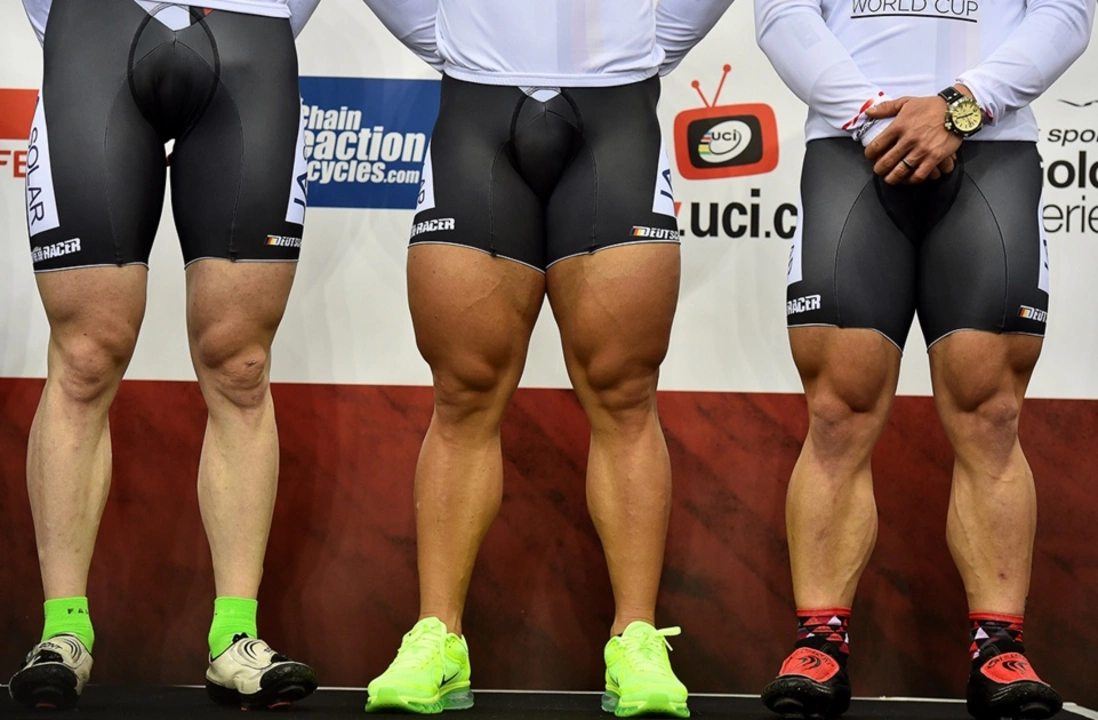Muscles: Building Strength on Two Wheels
When you hop on a bike, you’re not just burning calories – you’re hitting a suite of muscles that keep you moving. From the quads that push the pedals to the core that stabilises the frame, cycling offers a low‑impact way to sculpt strong, lean legs without the joint stress of running.
Most beginners think cycling only works the thighs, but the truth is broader. Your glutes, hamstrings, calves, and even your upper body get a workout, especially when you vary resistance or throw in some hills. Understanding which muscles are targeted helps you tweak your rides for specific goals, whether that’s faster sprinting or a more powerful climb.
Which Muscles Get Worked When You Ride
The front of your thigh – the quadriceps – does the heavy lifting on every downstroke. They extend the knee and generate the power you feel when you push hard on a flat road. Meanwhile, the hamstrings on the back of the thigh contract to pull the pedal up during the recovery phase, giving a smoother pedal circle.
Your glutes fire when you stand up or tackle a steep hill. A strong butt not only adds power but also protects your lower back by taking strain off the spine. Calves, especially the gastrocnemius and soleus, stabilize the ankle and help you maintain a steady cadence.
Don’t forget the core. A firm abdomen and lower back keep the bike steady, especially in windy conditions or when navigating technical turns. Even your shoulders and forearms engage when you grip the handlebars, though they stay relatively relaxed compared to the lower‑body muscles.
Tips to Maximize Muscle Gains on the Bike
1️⃣ Add resistance. Climbing a hill or cranking up the gear forces your legs to work harder, recruiting more muscle fibers. If terrain is flat, use a higher gear or a trainer with adjustable load.
2️⃣ Mix in intervals. Short, intense bursts followed by recovery periods shock the muscles and stimulate growth. Try 30 seconds at a hard effort, then 90 seconds easy, repeat 8‑10 times.
3️⃣ Stand up occasionally. Riding out of the saddle engages the glutes and hamstrings in a different way than seated riding, giving a balanced workout.
4️⃣ Keep cadence in check. Aim for 80‑90 revolutions per minute on flats; a higher cadence reduces joint stress while still recruiting fast‑twitch muscle fibers.
5️⃣ Combine with off‑bike strength work. Bodyweight squats, lunges, and planks reinforce the same muscles you use on the bike, helping you ride stronger for longer.
Nutrition matters too. Protein spread throughout the day supports muscle repair, while carbs fuel your rides. A post‑ride snack with both – like a banana and a handful of nuts – speeds recovery.
Finally, listen to your body. Soreness is normal after a hard session, but sharp pain is a warning sign. Stretching the quads, hamstrings, and calves after each ride keeps flexibility high and reduces injury risk.
Whether you’re chasing a personal best, shedding a few pounds, or just want stronger legs, cycling gives you a versatile toolbox. By focusing on the right muscles, adding variety, and supporting recovery, you can turn every ride into a strength‑building session without ever stepping foot in a gym.
Cycling is a great way to build strong quads. It is an aerobic exercise that works all the muscles in the legs and is great for strengthening the quadriceps. Cycling also helps improve balance, coordination, and flexibility, making it a great option for those who want to build big quads. When cycling, use short, powerful bursts of energy to really put your quads to work. Incorporate hill climbs, sprints, and other challenging terrain to maximize your quad gains. With a regular cycling routine, you can start to see a noticeable increase in your quad size.
Continue reading...
